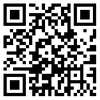Use of Time Series for Drive Systems with the General Variant
Time:03 Sep,2024
<p style="text-align: center;"><img src="/ueditor/php/upload/image/20240903/1725352681128277.png" title="1725352681128277.png" alt="4.png"/></p><p style="text-align: justify;"><span style="font-family: arial, helvetica, sans-serif; font-size: 12px;">If time series have positive and negative torques/speeds, then alternating load changes arise, which are very sensitive for strength verifications. For gears load spectrums of type C, for shafts type B, and for bearings type A must be used—meaning for a shaft, a gear, or a bearing calculation, a different load spectrum must be used. To make things even more complicated, the load spectrum for every gear pair must be produced separately. This will be explained in the next section.
The handling of time series with positive and negative torques/speeds in systems is very complex and requires special adaptations in drive-system software. If, for example, the time series is given for the input coupling of the system, then for every gear pair, the ratio r between the input coupling and the pinion of the pair must be known. Then the time series (given for the input coupling) is adapted to the pinion by multiplying the torque by r and reducing the speed by r. This modified time series is then used to generate the load spectrum for the verification of the gears. The same procedure can be repeated for shafts and bearings.</span></p><p style="text-align: justify;"><span style="font-family: arial, helvetica, sans-serif; font-size: 12px;">For shafts and bearings alone it is also possible, and simpler, to generate the load spectrum of type A and type B at the position where the time series is applied. Then the system calculation must be executed twice, once with the load spectrum of type A for all the bearing verifications, and then with type B for the shafts.</span></p>

